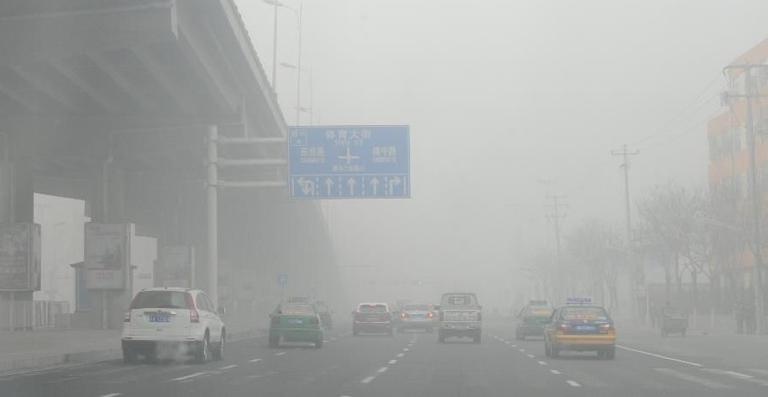Dust-haze is also called atmospheric brown cloud. According to Specifications for Surface Meteorological Observation of China Meteorological Administration, dust-haze is defined in this way: “a huge amount of dry dust particles that are extremely subtle are flowing evenly-scattered in air, making air unclear with the visibility no more that 10km and bringing yellow and red color to lighting facilities. They seem a little blue if they are under darkness.
Nowadays, there are four areas suffering from serious dust-haze: the Huanghuaihai area, the river valley of Yangtze River, Sichuan Basin and Pearl River Delta.
It affects physical health. The composition of dust-haze is very complex with hundreds of atmospheric particles. Among them, the main unhealthful things are aerosol particles with diameter lower than 10 micrometers like mineral particles, sea salt, sulfate, nitrate, organic aerosol particles and so on. They can enter humans’ upper and lower respiratory and lung lobes and stick onto them.
Most of the aerosol particles can be inhaled into human respiratory, especially for sub-micron particles of which the stimulation in the upper and lower respiratory and pulmonary alveolus causes inflammations like rhinitis and bronchitis, etc. Because of this, being in dust-haze for too long increases the risk of a lung cancer.
Besides, the ultra violet ray in sunshine is the only way for human bodies to compound vitamin D. Weakened ultra violet ray is the direct cause of the prevalence of rickets in children. What’s more, ultra violet ray is a vital natural weapon for killing atmospheric microorganisms like bacteria and virus. Dust-haze takes off the edge of ultra violet ray in surface layer, which easily makes infectious bacteria more activated and increases epidemics.
It affects mental health. Dust-haze triggered pessimistic mood, which can be out of control without timely adjustment.
It affects traffic safety. Low visibility comes along with dust-haze and as the pollution lasts, the traffic congestion brings frequent accidents.
It affects regional climate. This causes that extreme regional climate goes with increasing frequency and meteorological disasters happen in series. What people are more worried about is the earlier appearance of photochemical smog pollution.
Photochemical smog pollution is a kind of light blue smog as an outcome of the chemical reactions between lots of oxynitride and oxycarbide in the waste gas from cars and factories. Its main components is a series of oxidizing agents like ozone, aldehydes, ketone and so on. They are highly toxic and have strong stimulation on human bodies. In serious situations, people suffer from dyspnea, failing eyesight, tetany and so forth.

Comment list ( 0 )
